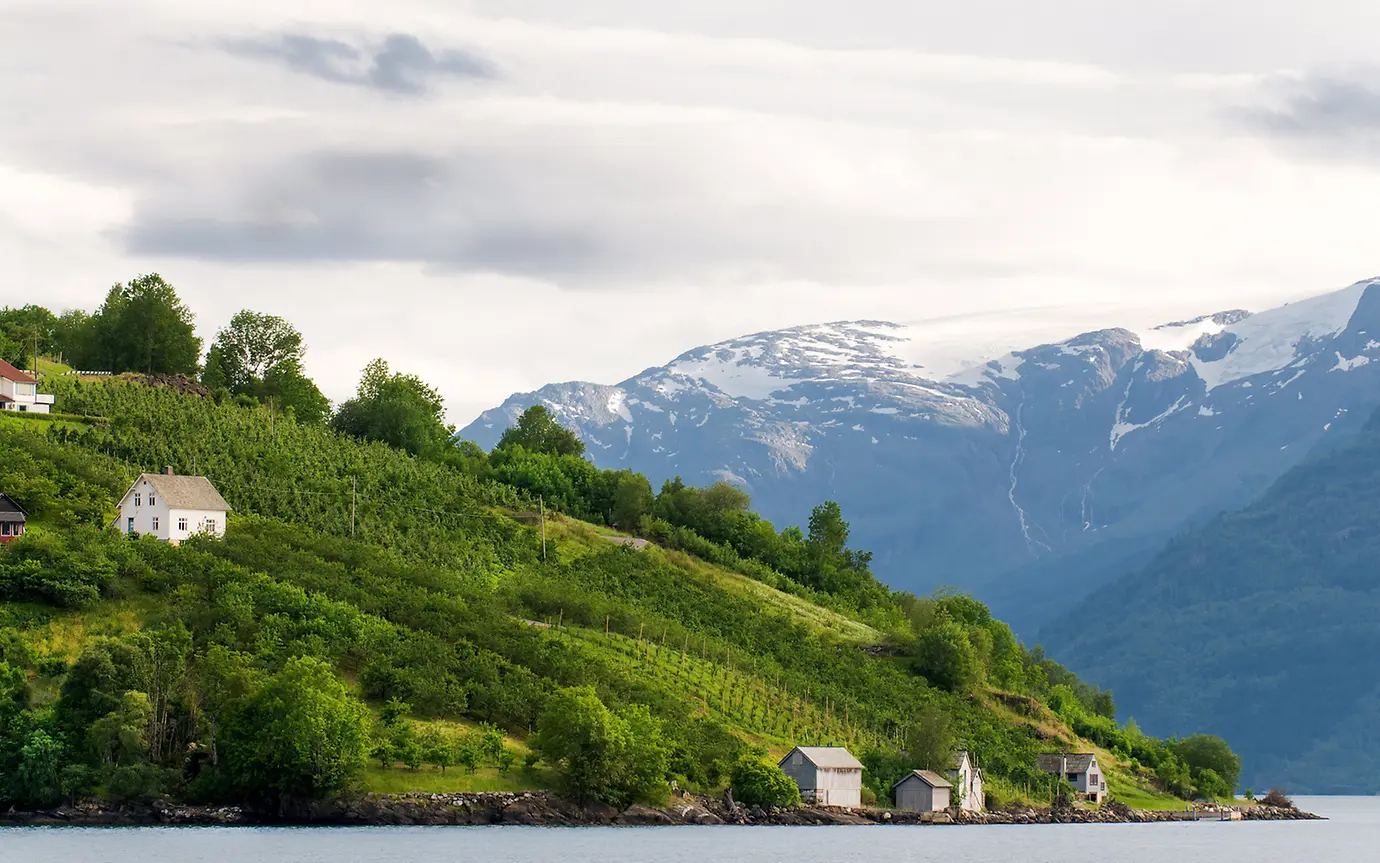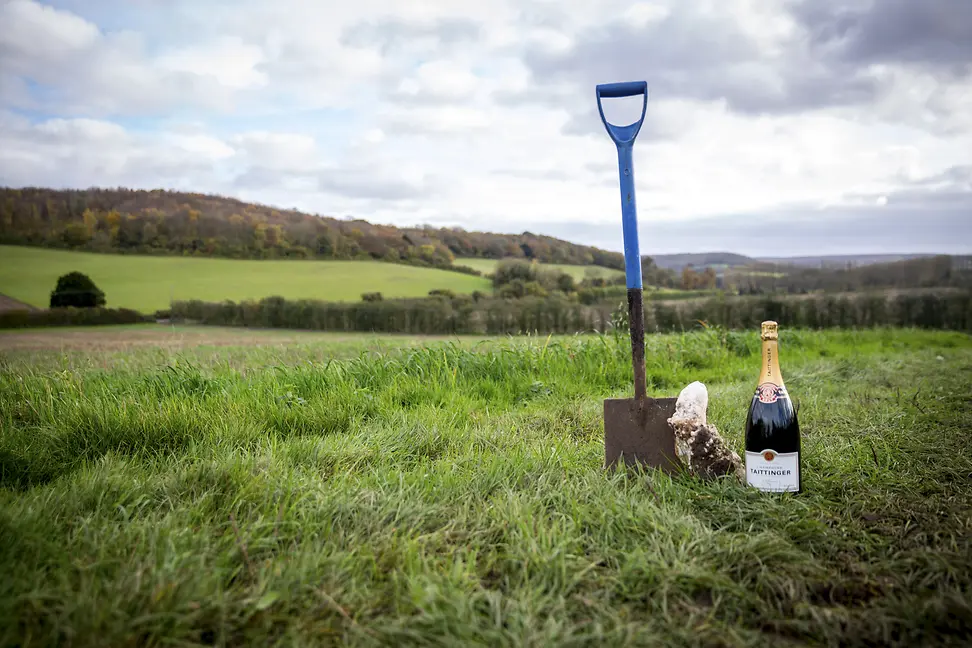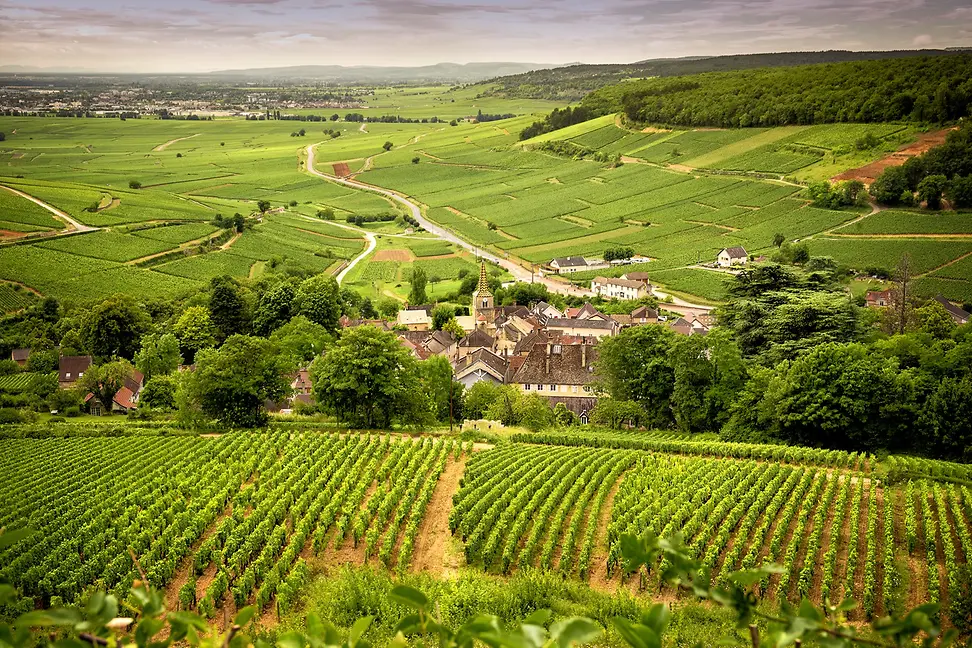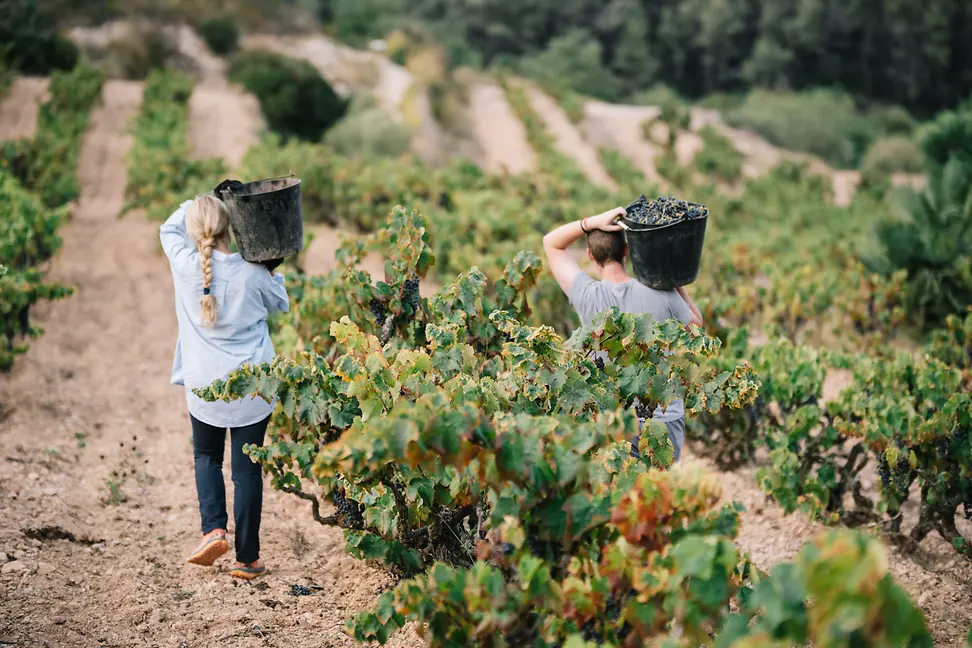- Home
-
Private banking
-
LGT career
Can a wine still tell the story of its land when the land itself is changing? As vineyards adapt to climate change, ancient traditions are being re-examined, and new frontiers - like southern England - are rising to prominence.

Climate change has created notable challenges for farmers, including grape growers and winemakers. Extreme weather can add undue stress to a vine, forcing it to shut down in periods of intense heat and dryness, focusing on itself rather than its grapes for survival. In times of excessive rain and humidity, it has to defend itself against fungal diseases which can damage its leaves, shoots and fruit. In addition, warmer temperatures can lead to greater ripeness in grapes which, in turn, creates higher alcohol, lower acidities and high pHs. As a result, wines can sometimes lack balance and even be vulnerable to bacterial and yeast spoilages if producers are not careful.
However, not all is doom and gloom. Warmer temperatures and less rainfall have benefitted certain viticultural areas such as Great Britain. Though grape growing and winemaking have been dated back to at least the 11th century, England’s historically cooler climate made quality wine production a bit of a challenge, despite the warming influence of the Gulf Stream. However, in the past 20 years, there has been a dramatic shift.

In the 1980s, there were 300 to 400 registered vineyards in England. Today, there are over 1000, with the number rising 80 % in the last six years alone. By 2023, there were 221 commercial wineries operating in England - mostly in the southern and temperate counties of Kent ("The Garden of England"), Sussex, and Essex followed by Hampshire, Surrey and smaller plantings in Dorset, Devon and farther north.
England’s southern counties do not just benefit from warmer temperatures. Much of the soil in Kent, for example, is comprised of chalk similar to what can be found in the Côte des Blancs region of Champagne, south of Epernay. In addition, Dorset is known for its fossil-rich clay soil from the Upper Jurassic age ("Kimmeridgian") similar to that of Chablis - whose soil was actually named after the Dorset town of Kimmeridge.
These chalk and clay-limestone soils provide excellent drainage, a usual necessity for quality grape growing. They also work well with their main varieties - Chardonnay, Pinot Noir and Meunier - which are moreover the principal varieties of Champagne.

Naturally, with the dominance of these varieties paired with its cooler climate, it logically made sense to produce sparkling wines. And today, around 75 % of the wine production in Britain is indeed sparkling. But Britain’s still wines have also benefitted from the additional sun and warmth - arguably even more as greater ripeness is often needed.
English vineyards currently total around 4400 hectares (10’800 acres) and they continue to grow. With higher quality wines from both naturally improved growing conditions as well as increased "savoir faire" in both viticulture and winemaking over the years, WineGB expects wine production to increase to around 24.7 million bottles by 2032, a 100 % rise since 2022. This tremendous development has inspired some to call Britain "the fastest-growing wine region in the world".
But countries benefitting from these climatic changes go beyond England. Today, there are even a handful of wineries in Scotland, Sweden, Norway and Finland - a phenomenon that one would have thought impossible even 30 years ago.
To learn more about the development of wine in Great Britain and its sustainability reports, please visit the Wines of Great Britain website.
Life isn't bubbly for everyone though. The legendary region of Burgundy is one who is finding these shifts challenging. Pinot Noir and Chardonnay are indigenous varieties to this area and have long thrived in its cooler climate and minerally rich clay-limestone soils since the Middle Ages. Pinot Noir is notoriously sensitive and difficult to grow due to its thin skins which are susceptible to sunburn and rot. Chardonnay struggles in drought so these climatic changes have posed difficulties in some recent vintages like 2018, 2019, 2020, 2022 and 2023 when temperatures hit new record highs.

The wines from Burgundy have long been known for their freshness, balance, finesse and terroir-driven personalities. The wines can have such magic that many regions around the world have tried to mimic their ethereal energy. Over the past 15 years, there has been much discussion about whether the region can continue to successfully produce what many feel are the world’s most desirable (and expensive) wines.
Burgundy is not alone. Even regions that have traditionally been quite hot and which often grow notably robust, thick-skinned grapes - like Southern Italy and Spain - are facing difficulties. Vines are usually dry farmed in much of Europe - unlike New World areas such as California where they can freely irrigate if water is available. Due to the heat and potential lack of water, grapes and bunches can be quite small, causing ultra-low yields and creating rich, alcoholic wines as well as financial issues.
However, not all vintages have experienced warm, and potentially dry growing seasons. Climate change has also created more erratic weather with intense hailstorms, spring frosts, excessive rain and unusually colder weather. These conditions have not been felt only in Burgundy but across Europe. Vintages such as 2021 and 2024 experienced historical devastation due to frost, eliminating crops by as much as 90 to 100 % depending on the vineyard.
Fortunately, there is hope. Over the past ten years, the vineyard landscape has been shifting across Burgundy and beyond in order to address these challenges.
For example, leafy canopies are gradually being trellised higher - up to two metres as opposed to the traditional height of up to 1.2 metres. Some growers even twist the leaves and shoots at the top of the canopy into a type of braid ("tressage") rather than cutting them back ("hedging"). These practices tend to protect the vine from stress while shading the fruit which helps prevent sunburn on the grapes. Growing the fruit higher off the ground also helps prevent frost damage, since cold, humid air tends to linger closer to the ground. Some producers even claim that the finished wine exude brighter flavours and finer tannins.

Some producers have even started trellising on single stakes - a site far more common on the steep slopes in Germany's Mosel Valley for Riesling or in Côte Rôtie for Syrah. Traditionally in Burgundy, vines are trained on rows of wires, creating dense wall-like structures that can harbours humidity and block out the air. But when single vines are grown on stakes, flowing air is able to freely pass in between the vines which naturally aerates and cools the canopy.
Though biodynamics began in earnest in the 1990s in Burgundy, more and more producers are following this farming concept originally created in the 1920s by Rudolf Steiner, an Austrian philosopher. Many have observed that the applications of dynamized herbal teas, silica and other biodynamic vineyard practices have enabled the vines to become naturally more resistant to whatever Mother Nature throws at them.
For those regions beyond Burgundy which have more relaxed appellation rules, some producers have been planting PIWI varieties. PIWI is an abbreviation for "Pilzwiderstandsfähige Rebsorten", which stands for "fungal resistant grape varieties". PIWIs began to exist around the beginning of the twentieth century but have developed progressively over the past 20 years as grape growers have become more environmentally conscious.
As temperatures have risen, so has the potential threat of fungal problems. Being naturally fungal resistant, PIWI varieties require fewer treatments during the growing season. Some growers have quoted that as few as two treatments might be required compared to potentially eight or more with established vinifera varieties.
Countries like Germany, England, Switzerland, Austria, Liechtenstein and Canada have historically been more open to experimenting with PIWI varieties, though other more conservative countries like France have become more forward-thinking as well. Champagne is arguably the most regulated and strict wine producing region in the world, yet in 2021 local authorities allowed Voltis, the first (and only) PIWI variety of the region, to be added up the 5 % in its blends.
Some marginal climates have benefitted from climate change in certain ways while for many others, the environmental shifts have presented a huge array of new challenges, bringing with them new ways of thinking and living. In the face of an evolving climate, winegrowers' ability to adapt may ultimately determine not just how vines survive, but how they thrive.